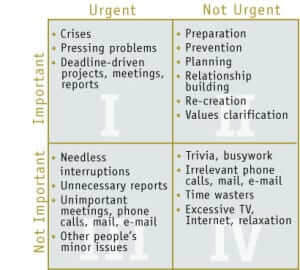Do you want to accomplish some big things in 2020, but are unsure where to start? Look no further! In this month’s post, Wendy Clark (Carpe Diem founder and CEO) shares her secrets to success. These five steps helped Wendy take Carpe Diem from a one-woman startup to the largest residential cleaning company in the Triangle.
1) Write Down Your Goals

The most fundamental piece of my life-approach is setting goals. At the end of every year I take time to listen to what I am being called to do and plan out what I’ll be working on in the coming year. I purposefully take time to think, and I write it down. These are two standard, no-brainer things that anyone can tell you. Take the time to think and to write down your thoughts/ideas/goals. Make this a priority. Your life is too busy to not do this.
There’s definitely something to be said for writing your goals down, even if it’s just in the form of minimal sentences. Some people write down lots of details concerning their goals. I, on the other hand, am not detail-oriented and stick to writing down the basic thoughts.
Goals can take many forms. I might write down “I would like to sell 30 units of X”, or “I would like to create an entrepreneurial curriculum.” Or, I might make a list of key relationships that I want to focus on this year. Your goals may look very different, but the important thing is to write them down. I hand write my goals using pen and paper. It might be more your style to record them electronically, though. Also, have a special place where you write down your goals. I have two pages of my planner that are devoted to my goals. There’s no use in writing down a goal on a sticky note if you’re just going to lose it!
2) Budget Time
Goal setting and budgeting time go hand in hand. Once you have decided on your goals, intentionally budgeting your time will enable you to achieve those goals. As I’m planning for the year I take a look at the calendar and think about what my annual “rocks” are. (If you’re not familiar with Stephen Covey’s time management illustration, watch this video. It’s is really powerful to see it unfold.) I take the time to prioritize my rocks for the year, for each month, and for each week. I plan my written To Do lists out according to the week, whereas other people operate on a daily basis. Every week I assemble my list so that on Monday I know what I will accomplish during the week.

Another big part of budgeting time for me is the “Time Management Grid,” also created by Stephen Covey. The information in this little graph has profoundly affected my life. We tend to spend the majority of our time in Quadrants 1 and 3, since they are urgent. However, we should really be spending our time above the mid-line, in the Important quadrants of 1 and 2.
We should especially focus on Quadrant 2, which refers to tasks that are not Urgent but are Important. Quadrant 2 is where your future lies. In this Quadrant, you take the time to think, plan ahead, and build relationships. Here you schedule time with yourself, to think and to focus on those things that only you can do. (Yes, I schedule appointments with myself, and you should too!). Investing in Quadrant 2 will change your life – your family, relationships, workplace, and community.
One of the biggest keys to spending more time in Quadrant 2 is learning how to differentiate between urgent and important. Spend some time really thinking through their differences. The Oxford Dictionary defines an “emergency” as “A serious, unexpected, and often dangerous situation requiring immediate action.” On the other hand,“important” is defined as “Of great significance or value; likely to have a profound effect on success, survival, or well-being .” What is truly an emergency in your life? What things have the most importance? I love the popular adage, “A lack of planning on your part does not constitute an emergency on my part.”
Once you’re able to think critically about what is an emergency and what is important, you can use this philosophy to plan your schedule. For me, this means setting aside separate times for emails, phone calls, and other projects. If I’m in the middle of a project and notice there are new emails in my inbox, I’ll wait to respond to them until I’ve finished my project. Getting off track can be costly in terms of time, creativity, and money. You’ll be surprised how many things aren’t actually interruptions unless you let them be.
3) Think Backwards
When goal-setting, the process of achieving those goals is actually “thinking backwards.” In general, people tend to think in terms of moving forward from Step A to B to C, in order to eventually get to Goal Z. When practicing “thinking backwards” you must start with Goal Z, which will lead you to Step Y, Step X, and so on. For example, let’s say your goal was that you wanted to make $60,000 a year. That’s $5,000 a month, around $1,250 a week, which divided by 40 hours is $31.25 an hour. So your question becomes, what do you need to do in order to produce $31 dollars an hour?
When thinking about wealth creation, there are multiple currencies that we can use to create. You can use your own personal hours to exchange time for money. Or, you can exchange other people’s hours for money (such as in a service-based industry) or products for money. Also, you can leverage equipment to provide a product or service for money. You can leverage your talents, skills, intellect, other people’s money, and your own money. There are so many different assets that can be used besides time. This is where creativity comes in!
Once you have a big goal, break it down and find the different leverage points. When you break it down by month or by week for it to be a reality, sometimes you hit the mark and sometimes you don’t. There are some goals that you’ll have to adjust all the time. You’re not always going to make them.

I love how a friend of mine described the difference between thinking forwards and thinking backwards. Imagine you’re walking forwards on your path towards a goal, and there’s a mountain in front you. So you just go ahead and tackle the mountain. The truth is that it may not have been your mountain to take on. You are letting the mountain define you, versus deciding whether you want to conquer the mountain that’s there or not.
When we trace from the endpoint back to the beginning, we can have a much clearer view of all the possible paths we can take, rather than the one that we’re already on. We can also see that the mountain we were looking at was really more of a gentle hill. There are so many systems in place, in our society and in our world, that we often don’t question. We all give way too much power away. We assume that if we are seeing a mountain then it’s the mountain we’re supposed to climb, but that’s not necessarily true.
4) Assign a Dollar Value to Tasks
Another practice that helps me to prioritize my time and determine what I can delegate is assigning dollar values to my tasks. For example, when I had a single-person household before my son was born, it was worth going to Whole Foods to pay a couple dollars per pound for their prepared foods. I knew my time was worth paying someone else that extra $2 an hour for them to do all of the prep and clean up.
When I first started Carpe Diem, I started assigning dollar values to tasks and way back wen I was scrubbing toilets. It has been so powerful for me that I’ve continued to this day. This process really goes back to The Serenity Prayer, which has been a major theme in my thinking. God grant me the serenity to accept the things I cannot change; courage to change the things I can; and wisdom to know the difference.

When I write out a weekly To Do List I’ll assign dollar values to the different tasks, which guides me in knowing what I can delegate out and what I should take of myself. This helps so much with prioritization and has helped me to create capacity. I have been able to build a team and to let go of certain things in a healthy way.
However, this concept isn’t just about money. Now that I’m a mom, I am more conscious than ever about evaluating whether something is truly worthwhile to do. I so enjoy being a mom, and I don’t want to leave my son for frivolous things that I don’t have to do or that aren’t worthy of my time. So, I am always evaluating whether something is valuable enough for me to spend time on. You must know what you have jurisdiction over. Once you know what you’re responsible for building and cultivating, you can trust other people with what they’re responsible for. This has been a huge game changer for me.
5) Capitalize on Hidden Assets & the Velocity of the Dollar
Maximizing the velocity of the dollar plays strongly in my decision making process. If you’re not familiar with the concept, the velocity of the dollar refers to how many times a dollar exchanges hands within a community. Say you pay a local plumber to work on your bathroom. Later the plumber goes to the Barber Shop down the street to get his hair cut, then the barber goes to the Laundromat next door to wash towels. Those dollars have just changed hands three times within the community.
The more times a dollar exchanges hands within a community, the wealthier the community becomes as the tide rises for everyone. For example, in Asian American communities a dollar passes through 10-12 times. In Latino and White communities it passes through 6-7 times, and in the African American community only 2-3 times.

I always try to first look for a source within my sphere for the services and items that I need. I would rather invest in my community than in a franchise or big box store. My secret sauce is to think about the velocity of the dollar not just in terms of the community though, but also in terms of Wendy’s World.
I take time to look at the ecosystem of my life, and plan how I can cultivate the velocity of the dollar. The easiest example of this in practice is my building, the John O’Daniel Exchange. As a business owner I will always have to pay rent, but with The Exchange I’ve found a place that I can pay rent to myself, so the dollar changes hands twice before it leaves Wendy’s World.
Cultivating the velocity of the dollar within my sphere goes hand in hand with discovering hidden assets. This is true whether they are my own, my company’s, my staff’s, or my friends’. All of us have assets that are not just financial, that instead involve creativity, talent, time, and relationships. Many times these assets remain undiscovered if we do not take the time to search them out. You have got to take inventory of your assets and ask, “What are the assets that we’re missing that we could leverage more?”
This concept is also useful when thinking through creating resources. If we create a training tool for Carpe Diem, we want to have multiple applications for that tool. We want to be able to leverage it as many times as possible, so that one action is multiplied into many.




